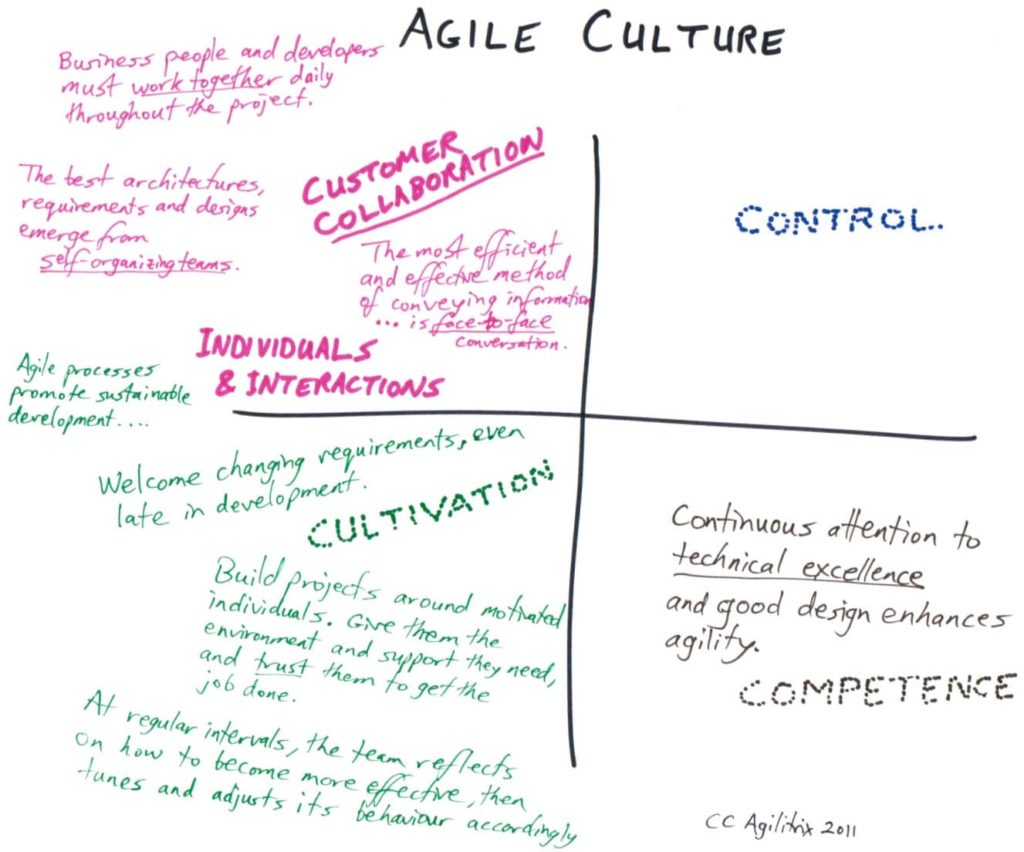What is Agile Culture? In an earlier post, I talked about Schneider’s model for understanding culture – How to make your culture work. (Hint: this post will make more sense if you read the earlier post.)
What do we discover about Agile culture when we apply the Schneider model? How does this inform us about approaching Agile adoption or transformation?
Michael Spayd has done the community a great service by undertaking a culture survey of Agilistas. The results are very striking: it shows that the two dominant cultures are collaboration and cultivation, with competence a distant third and control barely even on the map. So one can say clearly, Agile is all about the people. Interestingly, the survey included Scrum, XP, as well as Lean-Kanban folks. So thanks, Michael!
What does the Agile Manifesto and Principles informs us about Cultural?
I took a look at all the values and principles and plotted the ones that show a cultural bias on the following chart:

The chart illustrates the same finding as Michael Spayd’s survey – Agile is all about the people. It is aligned with a company cultures of collaboration or cultivation.
An Explanation Please!
Some of you may be curious as to how I arrived at my result.
For each value or principle, I analyzed how well it was aligned with each of the cultures. If there was a strong affinity, I associated it with that culture. For example, Customer Collaboration was very easy since it has the word collaboration in it and identifies success through people working together.
Some items seemed to be orthogonal to culture. For example, working software, didn’t really seem to suggest one culture over another. Well, it may weakly suggest competence culture, but only a bit.
Other items were a best guess based on my current understanding. It would be great to have a workshop to see if we can come up with an even better model.
I could go through each item and argue why I placed or chose to omit it. But that’s pretty boring and wouldn’t really change the result much.
So, there you have it: Agile is about people!
So what?
Consider for a moment what happens when foreign cultural elements are injected into an organization. Well, it’s like the human body: unless the body can be fooled into accepting the foreign tissue, it will be rejected.
More on what this means for Agile adoption and transformation in upcoming posts.


